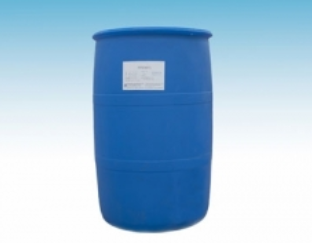When surfactants are adsorbed on the metal surface, their hydrophilic groups are adsorbed on the metal surface. Due to the different properties of hydrophilic groups, they are physically or chemically adsorbed on the metal surface. The adsorption of different surfactants on the metal surface follows different adsorption isotherms. When the surfactant concentration is low, a single molecule adsorption layer is formed on the metal surface, and the hydrophobic non-polar part forms a water repellent barrier in the aqueous solution to cover the metal surface. When the concentration is high, a bilayer adsorption film is formed on the metal surface due to the interaction of hydrophobic groups. The increase of surfactant concentration can improve its inhibition efficiency. When the concentration increases to make it reach saturated adsorption on the metal surface, it shows a good inhibition efficiency. For a series of surfactants, the inhibition efficiency reaches a large value near the critical micelle concentration CMC.

The influence of hydrophobic long-chain alkyl on corrosion inhibition is complex. When the chain length is short and there are few alkyl groups on heteroatoms, the prolongation of carbon chain and the increase of alkyl group can improve the corrosion inhibition of surfactant. This is because the adsorption of surfactant on the metal surface is provided by heteroatoms, and the lone electron pair forms a coordination bond with the metal ions on the metal surface. Alkyl is an electron repellent group. The growth of carbon chain and alkyl can improve the electron repellent effect, increase the density of electron cloud on heteroatoms, make the formed coordination bond more stable, and improve the corrosion inhibition efficiency. However, the solubility of surfactant with too long carbon chain decreases, so that its concentration in corrosive medium can not reach the concentration required for saturated adsorption. Therefore, after reaching a certain chain length, further increasing the number of carbon atoms will reduce the corrosion inhibition efficiency.
During chromium plating, the current efficiency is extremely low (10% ~ 15%), and insoluble lead anode is used. After power on, a large amount of hydrogen and oxygen are generated at both poles, which is easy to produce harmful chromic acid smoke, pollute the environment, endanger the health of operators, and cause equipment corrosion. In order to inhibit the generation of chromium fog, a small amount of perfluoroalkane ether sulfonate surfactant can be added to the chromium plating solution, A layer of foam is formed on the surface of the solution when chromium is plated, which inhibits the escape of the chromium mist, which ensures the health of the operator and reduces the consumption of chromic acid.
The surfactants used in electroplating play a direct and indirect role in the electrodeposition process. The essence of these roles is the surfactant of organic compounds at the interface between electrode and solution. With the progress of science and technology, the application of surfactants in electrodeposition will be further valued and developed.